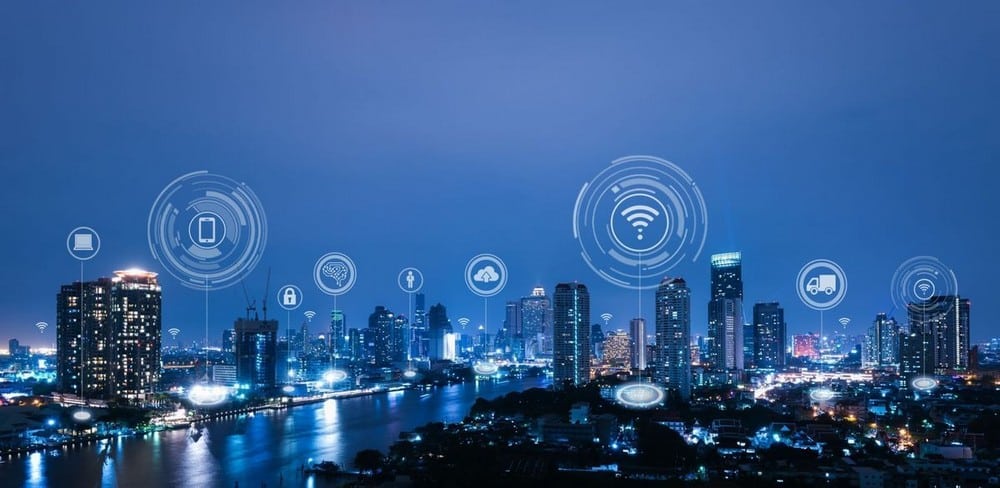
As cities change to cater for people who understand technology, the idea of smart cities is becoming very popular. This kind of a city uses linked up gadgets to make work easier and enhance the living conditions of the citizens, representing the modern world. Nevertheless, as technology advances, it also brings about more cyber threats that put in danger digital securities of such cities. Embedding antimalware remedies within the smart city structure can guarantee that these advances are neither susceptible nor weak under cybernetic attack.
What Are Smart Cities?
Smart cities utilize Internet of Things (IoT) devices and sensors to monitor and manage urban systems such as traffic, waste management, energy use, water systems, and public safety. Among other reasons for such initiatives is to make sure there are better living conditions for all people involved. These municipalities apply artificial intelligence, machine learning algorithms as well as big data analysis for efficient use of resources and an increased level of service quality. However, smart cities pose a major problem that arises from the interconnectivity of these cyber systems: cyberattacks.
The Growing Threat of Cybersecurity Risks
As cities become smarter, they become increasingly dependent on digital technologies and interconnected systems. This digital transformation makes urban infrastructure highly susceptible to cyber threats, including malware attacks. Malware can compromise critical systems that control traffic lights, power grids, water supply systems, and public safety networks. A well-timed cyberattack could disrupt daily life, cause financial loss, and even jeopardize public safety. Tools like the Moonlock antimalware tool are essential in detecting and preventing these types of cyber threats.
Hackers may exploit vulnerabilities in IoT devices, creating entry points for malware to infiltrate entire networks. For example, a cybercriminal could infiltrate a city’s traffic management system, causing gridlocks or accidents, or manipulate energy systems, leading to blackouts. These potential threats highlight the need for integrated cybersecurity measures in smart city infrastructure.
Integrating Antimalware Solutions into Smart City Infrastructure
Antimalware solutions are traditionally deployed on individual devices or within corporate networks. However, as cities become more connected, it is essential to rethink cybersecurity on a larger, citywide scale. Integrating robust antimalware solutions into smart city infrastructure involves several key strategies.
Secure IoT Devices and Sensors
To begin with, it is important to make certain that every IoT device and sensor has a robust antimalware protection for smart cities to be safe. Due to inadequate security protocols, most of these devices can be attacked easily. Secure device management frameworks should be put in place by cities so as to monitor and keep safe from malware the devices connected. For this reason, it is important that such devices receive regular updates, there is real-time threat detection as well as the data is transmitted through secure protocols which will help in reducing the malware infection.
Centralized Threat Detection and Response Systems
A good approach to cyber security in smart cities is having one system that can identify threats and respond. Such systems are capable of monitoring the city’s digital infrastructure, including analyzing such data for any signs of the presence of viruses and problems. If there is any danger identified by the system, it may react by itself (for example separate devices that got infected), or block dangerous IP and inform the security service. By stopping the development stage of these menaces, this kind of initiative greatly prevents their harmful effects in due course.
Network Segmentation
Network segmentation is another essential strategy for mitigating malware risks in smart cities. By dividing the city’s networks into smaller, isolated segments, it becomes more difficult for malware to spread from one system to another. For instance, if an IoT device in the public transport system becomes infected, network segmentation can ensure that the malware does not impact the city’s water supply or power grid. This isolation helps contain the effects of cyberattacks and prevents widespread disruptions.
Collaboration Between City Authorities and Cybersecurity Experts
Smart city cybersecurity is not a task for IT professionals alone. City authorities, urban planners, and cybersecurity experts must work closely to develop an integrated security strategy. By collaborating with experts in cybersecurity, cities can build more resilient infrastructures that incorporate cutting-edge malware detection and prevention tools. Ongoing education and training for city officials are essential to ensure that cybersecurity remains a top priority in urban development projects.
The Road Ahead: Future Considerations
As the number of connected devices in smart cities continues to grow, so too will the complexity of cybersecurity challenges. Future advancements in antimalware technology will need to evolve alongside these changes, ensuring that security measures keep pace with new threats. Emerging technologies such as quantum computing and AI-driven cybersecurity solutions may provide new tools for defending against malware in smart cities.
Furthermore, security measures for smart city infrastructures should be monitored by established rules put in place by the government through policy makers. The collaboration of governments and the private sector will enable smart cities to strike a balance between safety and progress.
Summary
Smart cities will improve in future and contribute to a better environment that is easier to live in and uses fewer resources. Nevertheless, it is important that antimalware solutions are incorporated in the city infrastructure to keep at bay any harmful advances towards this development. It’s possible to make secure IoT devices, have centralized threat detection systems, ensure cooperation among town planners and cybersecurity specialists – all of which will result in development of smart cities.







